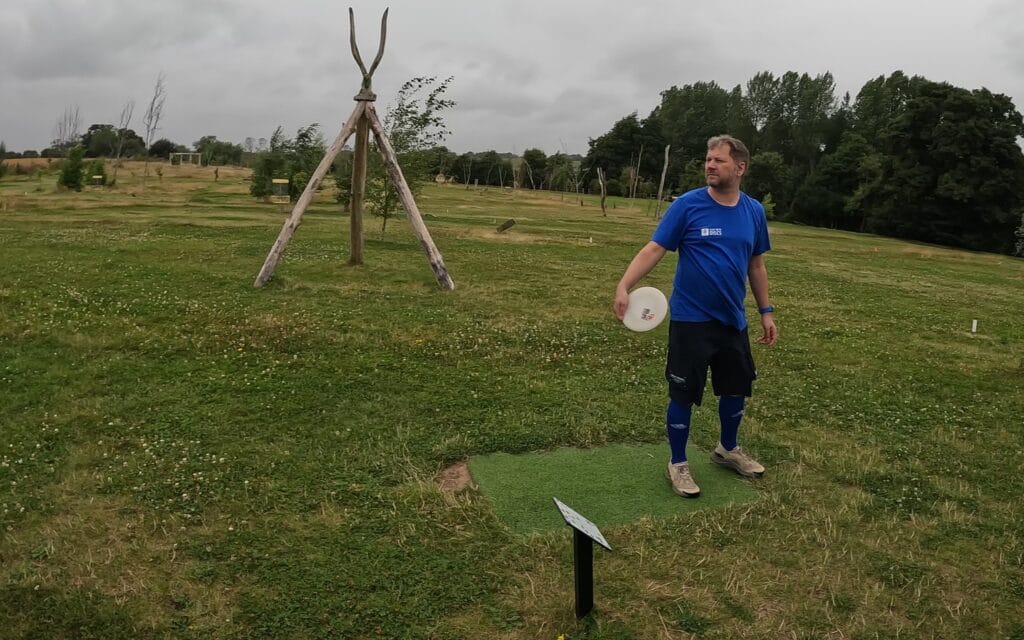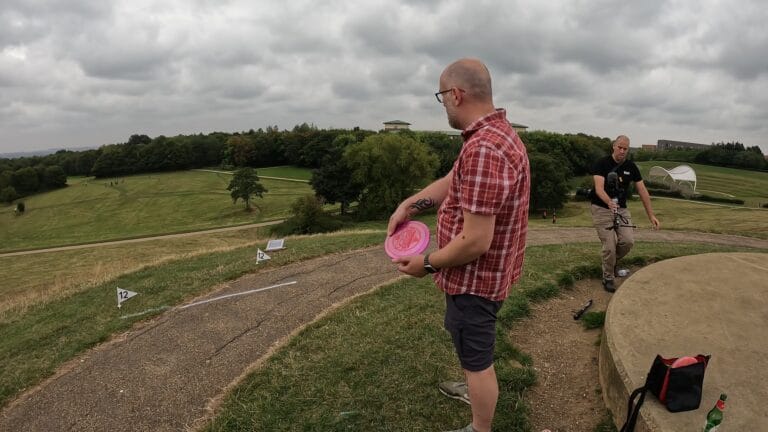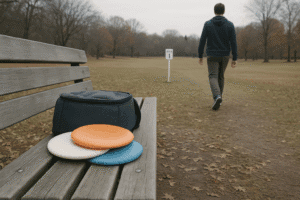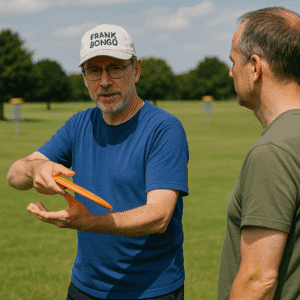You hit the course feeling fine, then a headwind, a cardmate’s chatter, and suddenly your throw looks like a frisbee thrown by a golden retriever. The fix is not talent, it is a simple, personal disc golf routine. Build one, and you replace nerves with certainty, second guessing with autopilot. Call it what you like, this is a Disc Golf Routine That Actually Works.
Why Disc Golf Routines Work
Routines cut decision fatigue and give your brain a familiar script. Athletes across sports use them to feel in control and emotionally steady, which is echoed in research on performance rituals. A consistent sequence tells your body we have done this before, so it dials down performance anxiety. Even simple breathing exercises can lower stress, backed by behavioural research.
How to build a disc golf routine
You do not need to copy a YouTube pro. The best disc golf routine is the one you actually use. Keep it short, tie it to a cue, and make every step earn its spot.
Step 1 Choose a routine trigger
Start at the same moment every time, for example as you place your mini marker or when your lead foot hits the tee. Predictability helps focus. A clear routine trigger stops faffing and starts execution.
Step 2 Keep it to four or five actions
You are playing disc golf, not performing Swan Lake. Four or five steps is plenty and keeps the card moving.
- Set feet at your anchor point
- Two slow breathing exercises
- Grip check
- Visualisation techniques for the line and landing
- Throw
Simple. Repeatable. Effective.
Step 3 Use all the senses
Feel the rim. Hear the breath. See the flight. The more senses you engage, the stronger the link between routine and focus techniques. That link pays off under pressure management.
Step 4 Practise until it is automatic
Routines hold under pressure only if you built them without it. Use fieldwork practice, putting practice, and casual rounds to rehearse until it is muscle memory. Consistency in throws starts long before tournament day.
Pre shot routine example
Here is a pre shot routine quick checklist you can tweak:
- Stand behind the lie, pick the line
- Place mini marker, choose your anchor point
- Commit to disc and angle, no last second changes
- Two breaths, visualise height and landing
- Step in and throw
Disc golf routine tips
- Time it. Keep the sequence under 10 seconds
- Cut any step that does not help your throwing mechanics
- Use one cue word, for example smooth or snap
- Reset after bad shots. The routine is the reset
Snap in modules for your routine
Disc golf warm up routine
Arrive early. Do light mobility for shoulders and hips, then 10 short throws at 50 percent, 10 at 70 percent. Finish with 10 putts from inside the circle. A quick warm up trims rust without fatigue.
You can mention a disc golf warm up routine in your notes to keep it consistent across courses.
Disc golf mental routine
Use a brief check, breathe, commit cycle. One cue word, one picture, then go. This trims rumination and helps pressure management.
Disc golf putting routine
Feet set, one practice swing, eyes to chain link, exhale, putt. Do the same thing from 5 metres and from 8 metres so confidence carries.
Disc golf throwing routine
Pick target, pick height, pick angle. One rehearsal for tempo, then throw. No extra disc flipping, no new doubts. This keeps your throwing mechanics consistent.
Disc golf practice routine
Split sessions into aim, power, and scramble. Track 10 identical shots and record hits. Fieldwork practice builds trust in the routine you will use on course.
Disc golf tournament routine
Pack the night before, arrive 45 minutes early, warm up for 20 minutes, then tee side calm for 5 minutes. Use the same pre shot routine on hole one that you used on hole 18 yesterday.
Avoiding the common pitfalls
Mistake 1 Copy paste syndrome
If you do not flip the disc three times in practice, do not add it now. Make your process fit your behaviour, not a highlight reel.
Mistake 2 The ritual gets bigger than the throw
Your routine should support the shot, not become the main event. If you spend more time preparing than throwing, cut steps.
Mistake 3 Skipping it when you are frustrated
Two missed putts and people abandon the plan. That is when the plan matters most. The routine is a stabiliser, not seasoning you add on good days.
Mistake 4 Expecting it to fix bad technique
The routine frames the picture, it is not the picture. If form is shaky, keep working on mechanics while keeping the sequence steady.

What a good disc golf routine feels like
When a routine clicks, time feels slower and cleaner. You are playing with the course, not against it. On a windy day in Leeds I stuck to the same process on every tee and played my tidiest round in weeks. I was not better than the wind. I was better than my own panic.
The beauty of boredom
Great routines feel boring, like a seatbelt. When nerves spike, familiarity calms the lizard part of the brain. If your sequence feels dull, good. That is what reliable feels like.
Final thoughts
There is something reassuring about a tidy, personal process. Build a disc golf pre shot routine you trust, keep it short, and practise until it runs itself. On days when everything wobbles, that small piece of order can save throws.
Go and create a disc golf routine that works, then keep using it. The scorecard will thank you.
Common questions about disc golf routine
It is a short, repeatable sequence before each throw. It boosts focus and consistency, especially when pressure rises.
Keep it under 10 seconds. Four or five clear steps are enough to centre and commit.
Pick a trigger, list four actions, add breath and visualise. Practise it in casual rounds first.
Use the same foundation, then add small tweaks. Familiarity keeps timing steady across shots.
Yes. A familiar disc golf routine reduces nerves and anchors attention when stakes feel big.
Arrive early, warm up lightly, then run your normal sequence. Avoid last minute changes.






